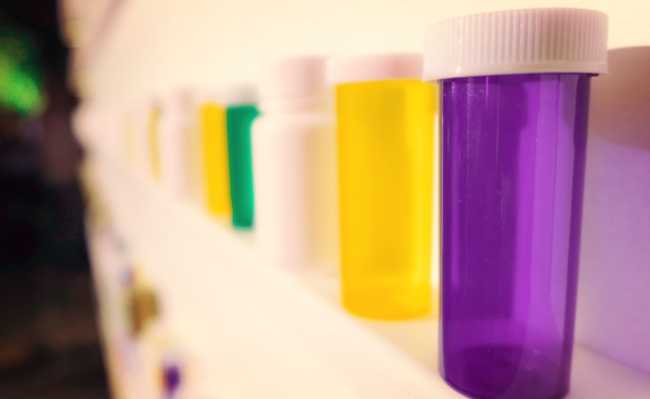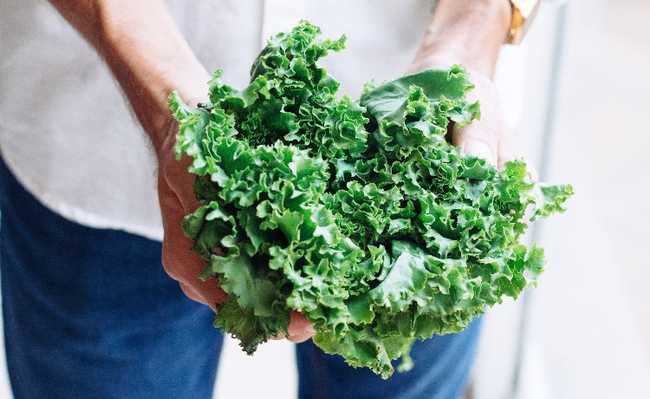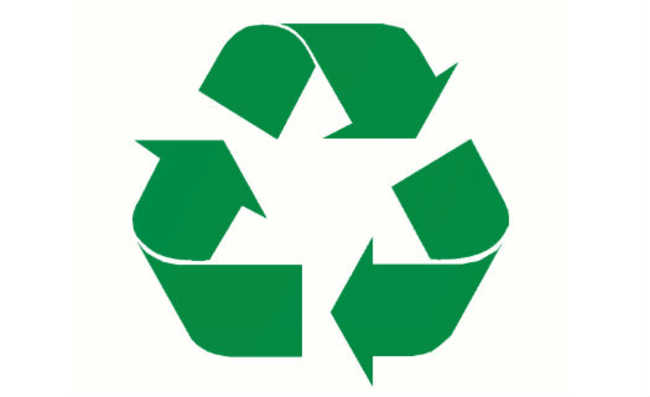About Turtles, Straws and Mental Triggers
Reflections on the problems and shared responsibilities involved in the issue of consumption, which determines the accumulation of plastic waste

Image: Jeremy Bishop on Unsplash
Images from August 2015 went viral again on social media in mid-2018. Scenes recorded by American scientists Christine Figgener and Nathan Robinson while researching the sea in Costa Rica show the extraction of something, initially thought of as a worm, from the nostrils of a turtle marine , a male of the species Lepidochelys olive, or simply Olive . It was a plastic straw, with more than 10 cm.
Ingested by the animal, probably in an attempt to expel or regurgitate it, the material ended up accessing the wrong passage. The nasal cavity of sea turtles connects by a long nasopharyngeal duct directly to the palate (roof of mouth). The original film, with about 34 million reproductions at the time of this publication, presents in eight harrowing minutes the helpless creature in a state of intense physical pain, an affliction that crosses the viewer to the state of moral pain.
reactions
A search for information about the search profile for terms associated with the keyword “canudo” in the last year in our country revealed, among the growth highlights, words such as biodegradable, sustainable, stainless steel, ecological and other similar ones. When the same survey is carried out based on the immediately previous year, associations appear without any environmental thematic interpretation.Suddenly, a good number of people began to look down on the offer of these disposables, turning down plastic straws in bars and restaurants and even carrying with them reusable straws for private use.
The Federal District government, as well as several city halls in the country, such as Rio de Janeiro and Santos, already guide their legislation with restrictions on the supply of disposable plastic straws by establishments such as bars, restaurants and hotels, following a growing market trend.
- Plastic straws will be banned in Rio de Janeiro
- Bill wants to ban plastic straws in São Paulo. Support!
Story
The possible impact of oceanic plastic emerges in the 1960s and 1970s, with a glaring failure on the part of society at large and the broader scientific community to recognize the magnitude of the problem and its global effects.The prosaic straw, in the fleeting nature of its consumption, is a metaphor for the linear economy that we have been subjected to over the last 200 years. This incomplete model calls for the extraction of resources from the planet (largely non-renewable), the industrialization of goods, the distribution of objects, their commercialization, consumption and disposal. Symbolic representation of the state of crisis, the straw is a trigger for the opportune debate.
The problem
Immediate observation allows us to verify the excess of disposables, an infinity of plastic objects for single use. Evolving a little further puts us face to face with an impressive universe of packaging, especially plastic. The combination of this immense volume of objects, most unfortunately not recycled, fills garbage cans, landfills and dumps or escapes into the environment, polluting soils, being washed into rivers and seas by the flood, or turning into oceanic waste to be ingested by animals such as Olive, fish or sea birds.As it wanders through the seas, subject to friction and photodamage, oceanic plastic progressively breaks down and absorbs contaminating chemical components dispersed in the environment. This is the origin of the environmental bomb we know as microplastic, which, when inserted at the base of the food chain, can be returned to us in time with animal protein or, without greater parsimony, mixed even with the salt we consume daily.
Oliva's martyrdom, like so many other images of environmental contamination by oceanic plastic, captures another inconvenient (and solid) truth about how badly we handle consumer waste and how much we need to improve this relationship. In our country, waste management is clearly an important part of this problem.
Several aspects, which can be combined with each other, corroborate this: poor sanitation infrastructure, lack of resources from city halls, poor public governance, insufficient action by regulatory agencies, inadequate design of products and packaging, little perspicacity of the petrochemical industry, of manufacturers of goods from consumption and retailers, poor environmental education of consumers, among others.
the landmark
If, on the one hand, reasons for the problem are not lacking, on the other, we have a comprehensive regulatory framework. Sanctioned in 2010, lawmakers opted for a policy of sharing responsibilities among agents: municipal governments, manufacturers, importers, distributors, retailers and consumers.In general terms, governments must provide sanitary solutions for the destination of tailings (non-reusable materials) and organic waste, in addition to carrying out selective collection; retailers are responsible for the possibility of receiving waste (reusable materials). The role of manufacturers, in turn, is to articulate the processes of logistics, reuse of materials and ecological disposal of waste, with guidance for the involvement of cooperatives when possible; on the other hand, the consumer must promote the forwarding of waste to selective collection or to the retailer.
Once the squares are defined, the idea is that agents are able to organize themselves in order to minimize waste and rationalize the consumption of resources, concentrating efforts on inserting their products and packaging into the fundamentals of the circular economy.
The Brand
The impact of oceanic plastic has become a relevant topic on the public agenda, and the material plays the role of a villain. The perception of excess matter dispersed in the environment and its impacts makes part of society, to a large extent, despise the substance, even disregarding its importance in the various applications and functionality that flexibility of synthetic resin gives to everyday life.Coordinated by a group of non-governmental organizations, an inventory carried out in 2018 involved around 10,000 volunteers in 239 cleanups in coastal areas, carried out in 42 countries spread over 6 continents. As a result, around 190,000 plastic parts were collected, classified according to the brands of the products they packaged.
The embarrassment affects brands, especially large manufacturers, whose blatant impact and greater exposure determine a position taken. In general, starting from their headquarters, they assume responsibility commitments for their packaging in the sense of reducing pollution.
In its worldwide program “A World Without Waste”, announced in early 2018, Coca-Cola is committed to reducing waste, collecting and recycling a bottle or can for each unit sold by 2030. In Brazil, specifically, it joined in 2017 with competitor Ambev in the preparation of a joint professionalization and equipping program for waste picker cooperatives.
Unilever, in turn, signed a commitment in January 2017 so that 100% of its plastic packaging is designed to be fully reusable, recyclableor compostableby 2025.
Danone, which has been progressively submitting its subsidiaries to System B certification, has signed a medium-term plan to replace its packaging. By 2021, they plan to use 100% PET bottles made from recycled material in all their major water markets. For 2025, the goal is to reach 25% recycled material, on average, in its plastic packaging, 50% on average for water and beverage bottles, and 100% for Evian branded bottles, which will be entirely made of bioplastic.
Nestlé's parent company is committed to making 100% of its packaging recyclableor reusableby 2025, with a specific focus on the problem of plastic waste. At the local level, the Brazilian branch recently released a campaign for the Nescau chocolate milk brand, in its presentation of six units in 200 ml carton packs (long life), ready for children's consumption, announcing that it intends to gradually replace the plastic straws that accompany the packaging by biodegradable material, paper.
The campaign communication also recommends, through information on packaging, points of sale and brand disclosures, that child consumers insert the straws into the box after consuming the product. The idea is to prevent straws from escaping into the environment, while it is not possible to fully replace plastic models with biodegradable ones.
Simultaneously, the brand entered into a partnership with Projeto Tamar, a conservation initiative aimed at fighting for the preservation of endangered species, with an outstanding performance in the search for the preservation of sea turtles. The actions ingeniously connect interesting elements of the process and some observations can contribute to the refinement.
The “throw inside” proposal is positive in avoiding the ingestion of the straw by animals, but it does not reduce the risk of escaping from the carton pack - which, although effective in preserving what it contains, has historically low levels of recycling. Another issue to be observed is that the replacement of plastic materials by paper will initially take place in only one in six of the packaging straws, a condition justified by the manufacturer due to the initial restrictions on the capacity to meet the demand of its suppliers.
The relatively low reduction in environmental impact perceived in the campaign, however, does not detract from the potential of the brand's actions, which address sensitive points of the problem. The form of the message is a pioneer in involving opportune recipients (parents and children), the partnership with Tamar was a good idea and the parsimony in the replacement of materials, we hope, justified in the experimental character of the initiative, that improved can evolve in scale towards the company's wide range of products.
the consumer
End users have a considerable influence on uncontrolled plastic waste pollution, as many unwittingly ignore or disregard the environmental risks and impacts of not making sure their consumer waste does not escape into the environment. Certainly, the sanitation infrastructure available to the population is, in many cases, unsatisfactory, creating an obstacle to the proper disposal of waste.There is, even so, a gap in the fundamentals of basic environmental education for the population. Not knowing the importance of their role in the process is in itself an important obstacle for consumers to legitimately incorporate the citizen role of taking care of their city, a responsibility said to be shared in the law itself. This is a weak point of the legislation, which fails by not explicitly promoting educational initiatives, only touching the issue by urging manufacturers to publicize initiatives and places for waste disposal.
the crisis
The progressive environmental crisis scenario describes a society in disarray, unable to organize itself and comply with basic rules of domestic hygiene. The circulation of shocking images of ocean contamination by plastic waste activated mental triggers capable of triggering collective mobilization, a context in which polyphony, disorganization and the lack of repertoire to deal with the problem contribute to a scenario of conflict, growing contestation and protest by civil society. The pervasive nature of the problem in its global reach indicates not only damage to marine biodiversity, but direct risks to human health and, to a large extent, negative exposure of the marks associated with contaminating residues.In response to the worrying situation, expectations about relevant agents in the protagonism in search of effective solutions are increased. Manufacturers of consumer goods, for example, especially non-durables, the sensitivity to conduct a specific approach oriented to articles with greater potential for leakage that they introduce to the market, post-consumer plastic objects of smaller sizes and shorter use time (objects for single use, disposables and the most varied packaging).
In addition to the possible measures involving reducing the consumption of materials, substitutions in their compositions for biodegradable material, changes in design, among other alternatives, it is also important to reflect on opportunities for strategic approximation between brands and consumers in their involvement in the process of solving the problem. On new forms of dialogue capable of qualifying consumption practices, better acquainting them with the ways of using their products, clarifying the need and importance of packaging as an integral part of the use experience, the value of engagement in properly disposing of them , impacts associated with non-collaboration and, finally, guide them on how and where to discard them.
The challenge
When considering the big brands, their impacts and the opportune global objectives they define, their branches incorporate and execute them in the light of the particularities of their local markets. In our case, it is important to recognize that the option for sustainable ways to combat the problem involves structuring a dynamic waste economy, capable of absorbing and processing, in its most varied types, the residual materials associated with its products.In addition to infrastructure, it is necessary to recognize and take advantage of the transformations that the intense flow of information determines in the way we interact, as well as the potential for integration and engagement that it represents. The virtual world crystallized the oceanic plastic agenda on the public agenda and Oliva's martyrdom is a metaphor for the crisis.
Public and private legal entities seek, with difficulties, to adapt, while individuals presented with the problem through straws may also be inclined to recognize ways to deal with other potential contaminants. It is an opportunity for new dialogues between brands and their users, for narratives oriented towards joint learning about how to solve or walk with diligence and dividing responsibilities in this direction.
In times of avoidable tragedies, the agenda of environmental education can provide a timely narrative for the convergence of agents and the maturing of consumer relations. Perhaps it's a promising way to collaborate with efforts for a more circular economy, activating hopeful new mental triggers.
Onofre de Araujo
Publisher, eCycle portal










